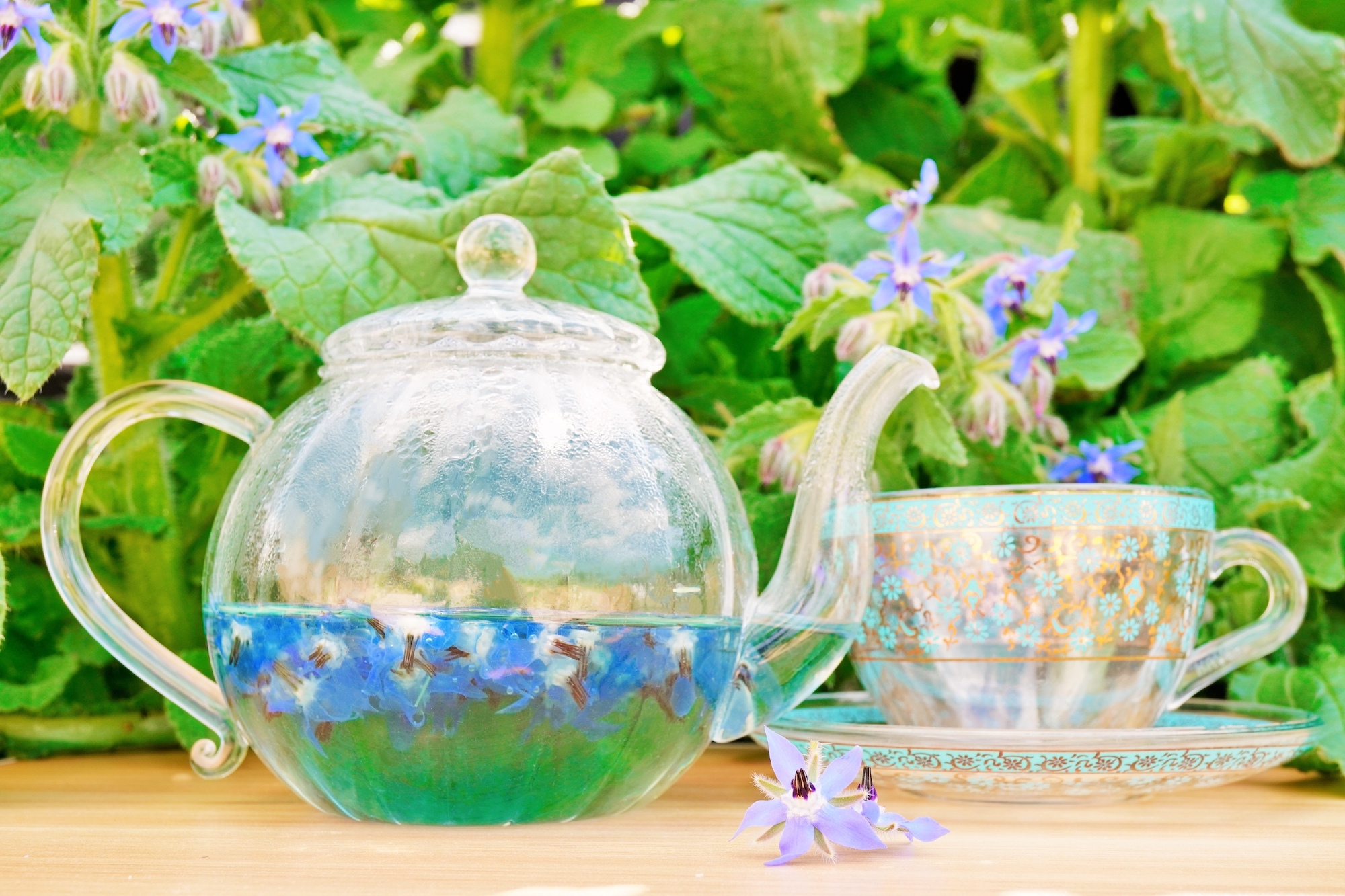
Caption
Borage, also known as a starflower.
Subhead
Planting, Growing, and Enjoying the Benefits of Borage in Your Garden
Read Next
Types
- ‘Bianca’ is a compact variety with rare white flowers. It’s well suited for growing in containers on the deck or patio.
- Common borage is the standard blue-flowered plant, and it can be used in flower beds or as part of a larger mix in a naturalized bed or meadow. It’s readily available both in packets and in bulk.
- ‘Variegata’ is a less common (and more expensive) variety with splotched leaves. The blue flowers remain attractive to pollinators while the leaves provide a bit of unique coloring.
Gardening Products
Cooking Notes
Borage is a versatile herb in the kitchen. Its furry leaves become pricklier with age, so they must be picked young and chopped finely. The leaves and the stalks can be chopped and cooked like any vegetable.
The leaves and flowers taste like cucumbers. They are added to salads, used in stocks, soups, and stews, or brewed to make a refreshing tea. The edible flowers add color to summer salads, can be candied for cakes, and look lovely floating in summer drinks and “mocktails.”

More Like This
Just for the record, the piece has this "Folk law states that if a woman slipped a bit of borage into a promising man’s drink," when, of course, it should be "Folklore states that if a woman slipped a bit of borage into a promising man’s drink". -- Autocomplete bites again.












Comments